Emma is a qualified teacher with twelve years’ experience in the classroom as both an English teacher and Head of Sociology, today, she’s going to explain to us why a plenary is crucial, and then, we’ve got a little something for you too…
Emma is also mum to three children in the state education system and she also writes at Emma and 3.
Plenaries are used by teachers either during or at the end of a lesson, to review aims and consolidate the students’ learning. It is an evaluative part of a lesson, where students reflect on what they have learnt and achieved during that teaching period. Furthermore, it can be a time to celebrate good work and outcomes.
Do I need a plenary?
Planning engaging lessons is crucial to being an outstanding teacher. In practice, this means that the students are engaged from the start of every lesson. When planning lessons, teachers are encouraged to have a hook at the start, which grabs the attention of the students. It could be a question, an image or music. Whatever it is, it needs to introduce the topic and then provoke further questions.
Likewise, the plenary of a lesson is just as important (doubly important during observations) as students need to understand what progress they have made and demonstrate what they learnt. One of the mistakes teachers can easily make is not leaving enough time for a plenary. It should not be rushed, and certainly shouldn’t be a quick add on.
Effective plenaries (like the main learning session) must be planned. A plenary is important for the students as it rounds off the lesson – they should leave your classroom knowing that they now know more than when they walked in.
Why are plenaries so important?
Whilst Ofsted doesn’t need to see a formal lesson plan, they do require evidence of planning and they will be looking for evidence of progression. Put simply, plenaries give that evidence as they demonstrate the students’ learning. Research has shown that ‘teachers in the best schools are twice as likely as teachers in poor schools to use a plenary and they use it to recap on the lesson, provide feedback, challenge thinking and provide opportunities for further discussion’.
Here are some creative examples that will enable your students to illustrate their progress.
1. Taboo
A fantastic and simple idea with minimal resources. Students pick a card with a term on that they learnt during the lesson. They must explain it to the rest of the class without using specific words that are also written on the card. This is a great way to consolidate the meaning of key terms.
2. Write an exam question
This is ideal for KS4/5. I ask students to write about how what has been taught may feature in an exam paper. This familiarises students with exam terminology.
3. Definitions on cards
– Hand the definitions out and students have to move around trying to find their partner word/definition;
– use them to play bingo. The cards have words and the teacher reads the definitions;
– place them on a table and see how quickly students can match them all.
4. Post-it notes
I have found so many uses for these throughout my teaching career! Ask students to write two things they learnt and come and stick them on the whiteboard. We then share these. I often use post-it notes at the start of a lesson too. I will ask a killer question and see what they know at the start.
5. Question the students and give them time to answer
As a teacher, it is easy to fill the gaps of silence, remember you need to give your students time to formulate what they want to say.
6. Use a soft ball to question students
The ball is thrown from one student to another named student in the class. The student states one concept/keyword – next one explains it. Next one chooses a word which links to it.
Good websites for ideas
There are a number of excellent websites filled with ideas for starters and plenaries, which will help you strengthen the students’ learning. My two favourite is TES teaching resources.
Emma is a qualified teacher with twelve years’ experience in the classroom as both an English teacher and more recently Head of Sociology. Emma is also mum to three children in the state education system and she also writes at Emma and 3.



